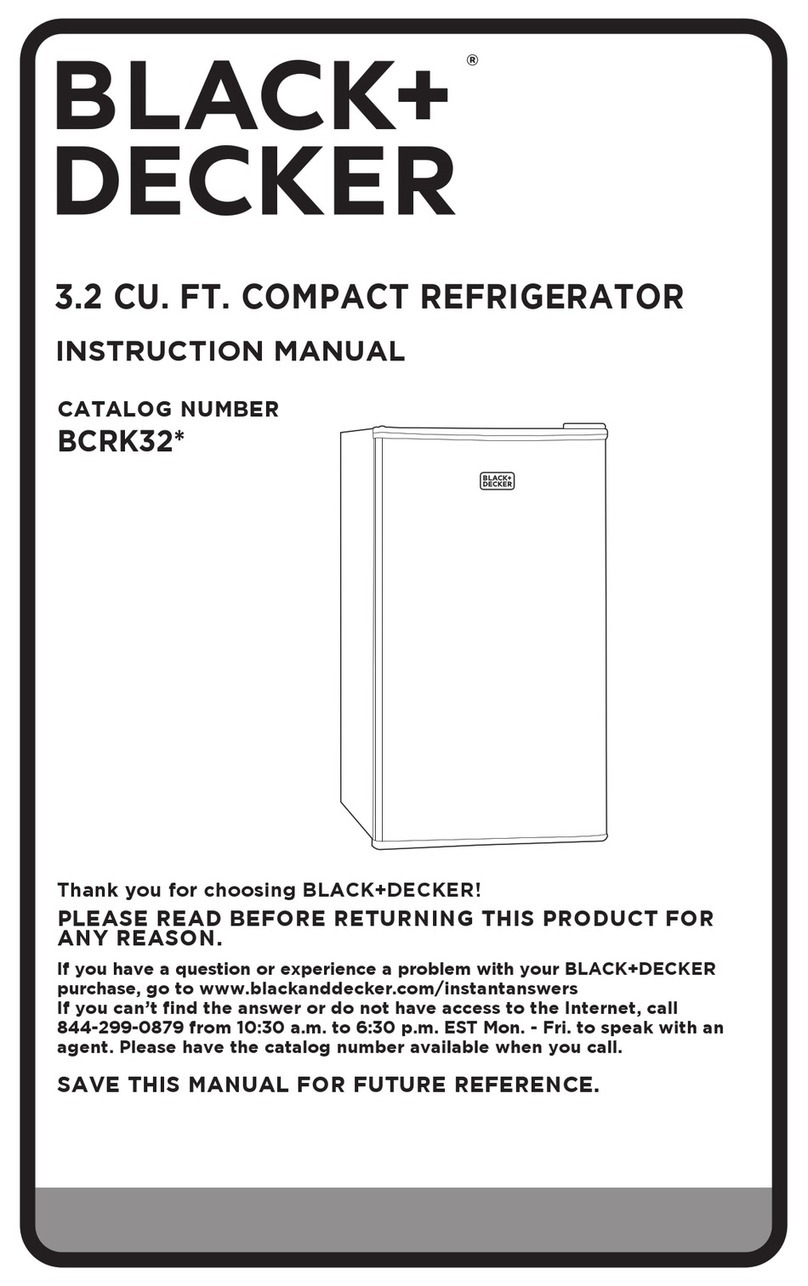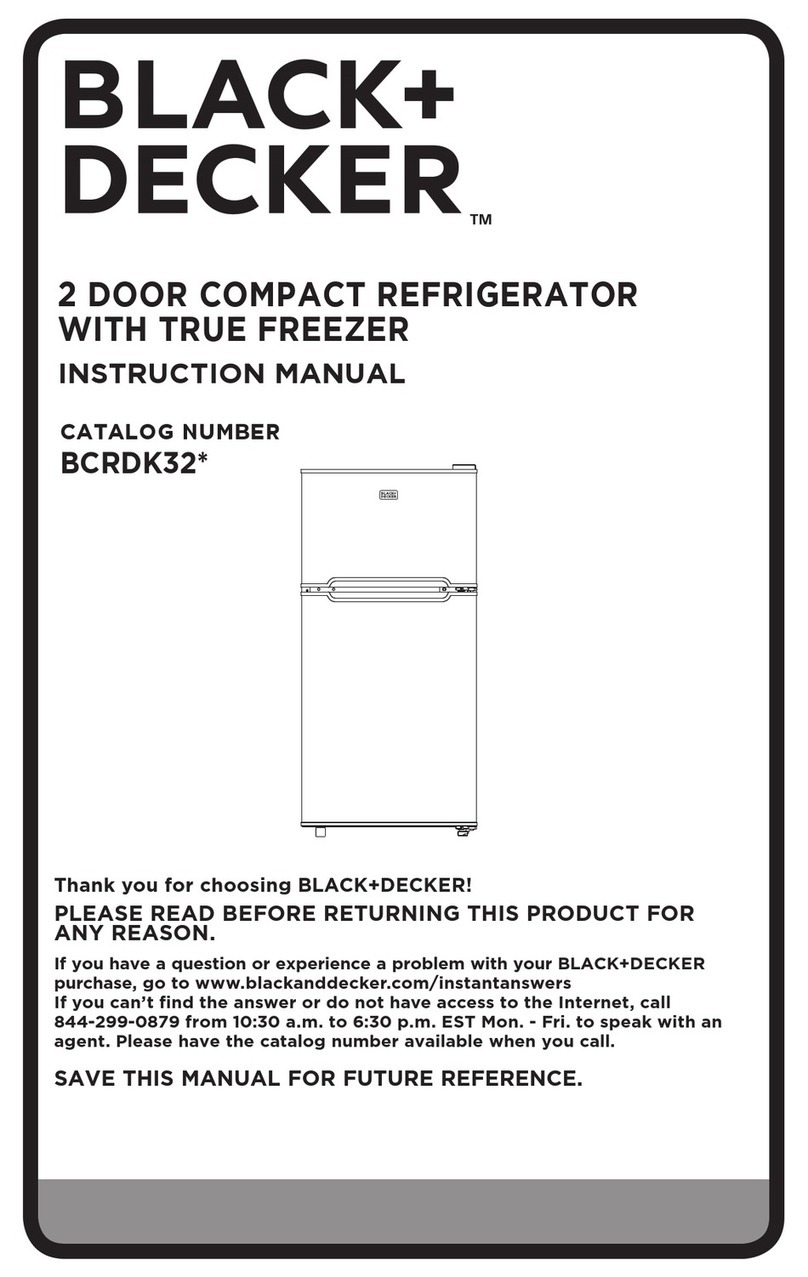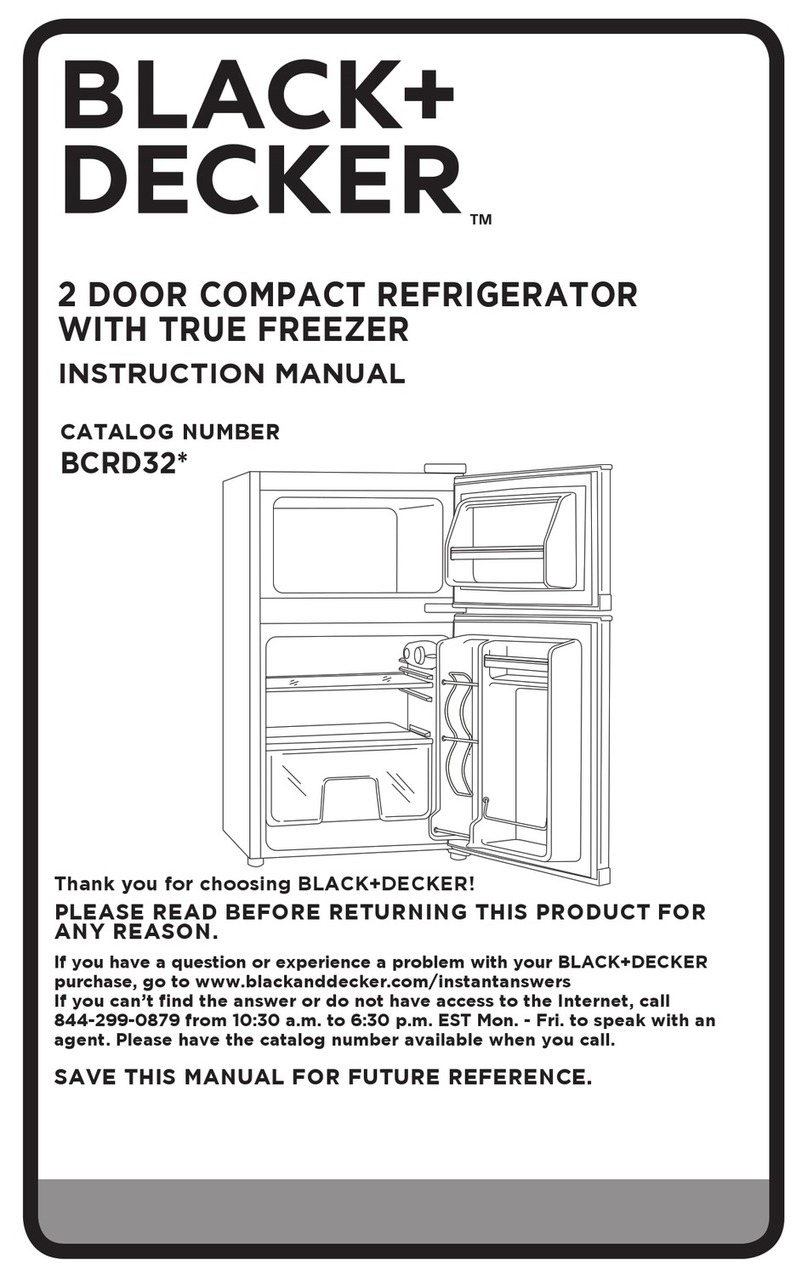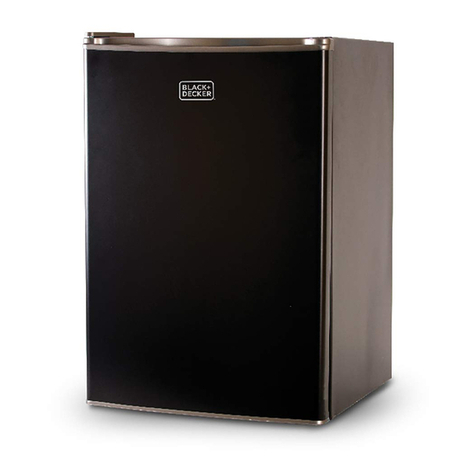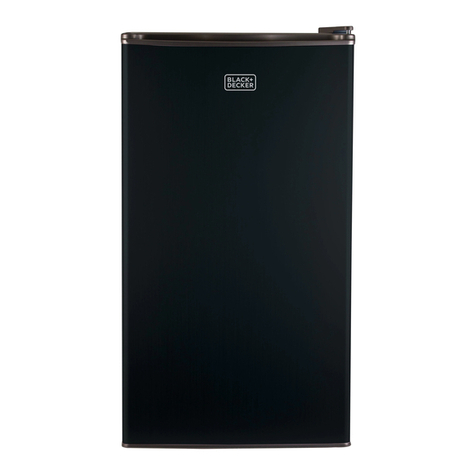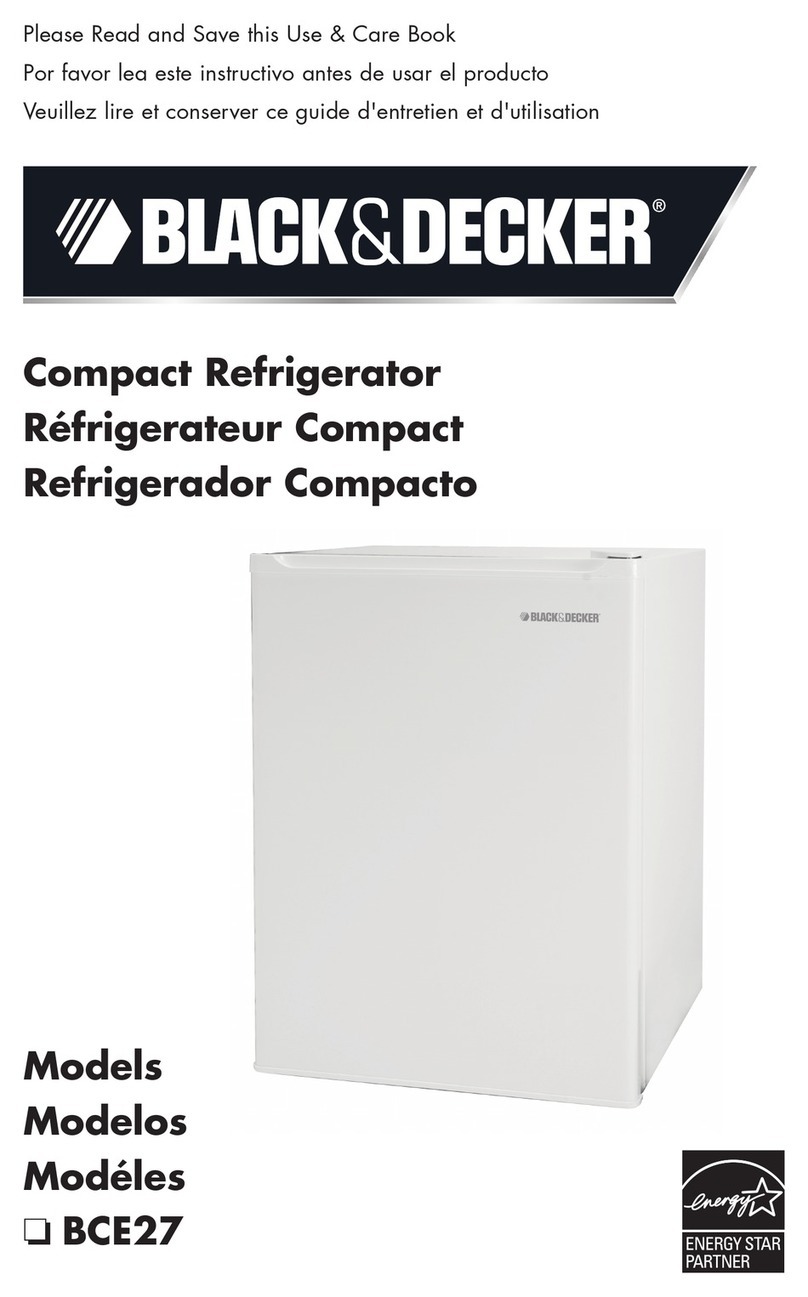9
English
Power Interruptions
• Occasionally there may be power interruptions due to
thunderstorms or other causes. Remove the power cord from
AC outlet when a power outage occurs. When power has
been restored, replug power cord to AC outlet. If outage is for
a prolonged period, inspect and discard spoiled food in the
refrigerator. Clean inside the refrigerator before reusing.
WARNING: To avoid electric shock, always unplug your
refrigerator before cleaning. Ignoring this warning may result
in death or injury.
CAUTION: Before using cleaning products, always read and follow
manufacturer’s instructions and warnings to avoid personal
injury or product damage.
General: Prepare a cleaning solution of 3-4 tablespoons of baking
soda mixed with warm water. Use sponge or soft cloth,
dampened with the cleaning solution, to wipe down your
refrigerator.
• Rinse with clean warm water and dry with a soft cloth.
• Do not use harsh chemicals, abrasives, ammonia, chlorine
bleach, concentrated detergents, solvents or metal scouring
pads. Some of these chemicals may dissolve, damage and/
or discolor your refrigerator.
Door Gaskets: • Clean door gaskets every three months according to general
instructions. Gaskets must be kept clean and pliable to assure
a proper seal
• Petroleum jelly applied lightly on the hinge side of gaskets
will keep the gasket pliable and ensure a good seal.
Proper Refrigerator Care and Cleaning
Cleaning and Maintenance
WARNING: IF OUTAGE IS FOR A PROLONGED PERIOD, INSPECT
AND DISCARD SPOILED FOOD IN REFRIGERATOR.
CLEAN REFRIGERATOR BEFORE REUSING.
Vacation and Moving Care
• For long vacations or absences, unplug the power cord from AC outlet,
empty food from refrigerator and clean the refrigerator, door gaskets
and water collection pan according to “General cleaning” section. Prop
door open, so air can circulate inside.
